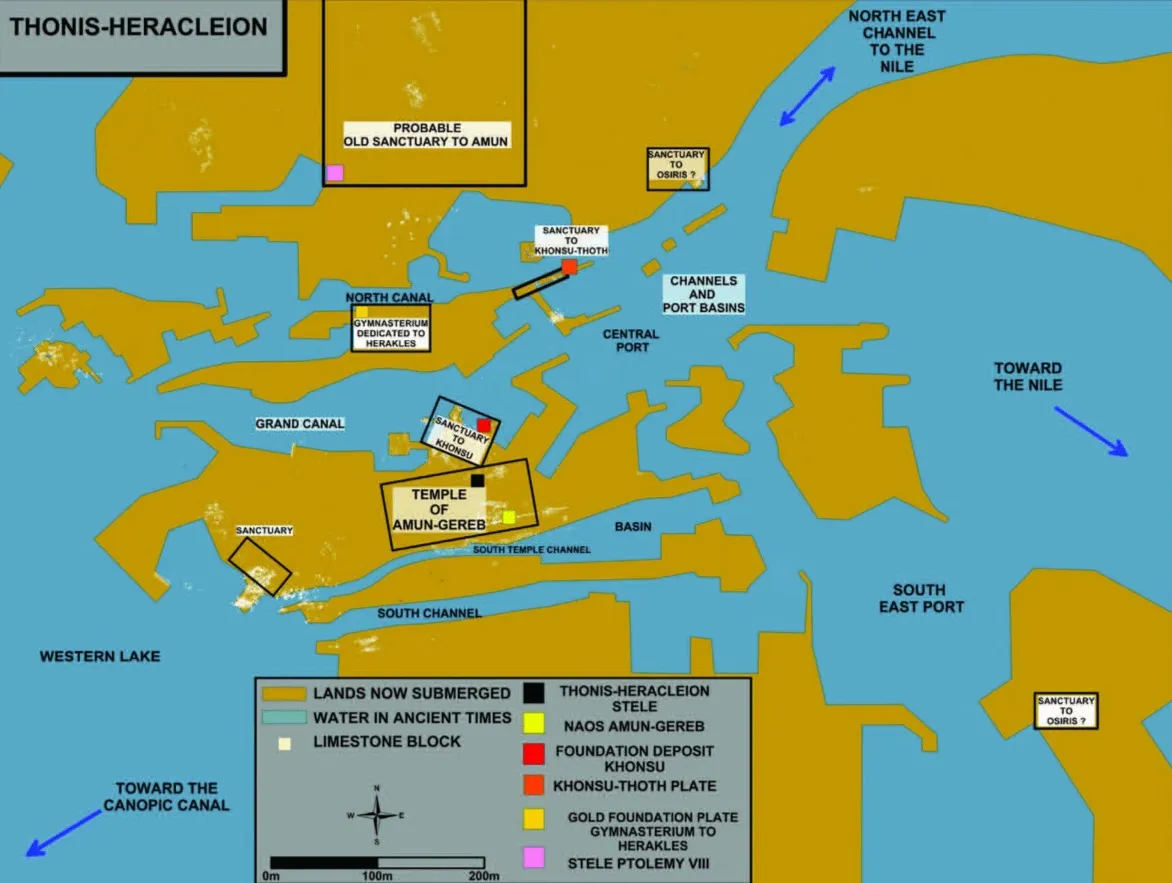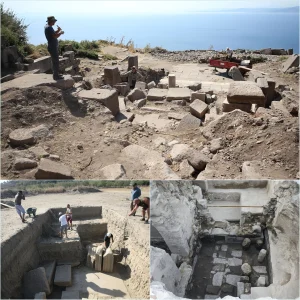The discovery was made in Thonis-Heracleion, an ancient city that was once Egypt’s largest port. Located seven kilometers from the Bay of Abou Qir, the submerged remains of two ancient temples have been unearthed in this city: one dedicated to the Egyptian deity Amun and the other to the Greek goddess Aphrodite.

A joint Egyptian-French archaeological team uncovered these finds in Thonis-Heracleion, which has been submerged for centuries. The European Institute for Underwater Archaeology (IEASM), led by Franck Goddio, has been researching the site since its initial discovery in 2000.

The team attributes the destruction of the Amun temple’s massive stone slabs to a cataclysmic event in the mid-second century BC. Among the treasures found in the temple’s ruins were gold jewelry, alabaster vessels for perfumes, and silver ritual instruments, all of which testify to the sanctuary’s former wealth and the devotion of the city’s inhabitants.

Beneath the temple’s ruins, the archaeologists discovered underground buildings from the fifth century, remarkably preserved with their original wooden supports and beams. Modern exploration technologies have played a crucial role in locating these artifacts buried under several meters of clay.
Dr. Goddio expressed that the discovery of such intact and exquisite items despite the severe cataclysm is deeply moving. The site also revealed bronze and ceramic artifacts from the Aphrodite sanctuary, suggesting that these items may have been imported from Greece.
Before Alexandria was founded in 331 BC, Thonis-Heracleion served as Egypt’s main Mediterranean port for many years. The city was eventually submerged due to earthquakes, tidal waves, and land liquefaction that engulfed 110 square kilometers of the Nile Delta, compounded by rising sea levels.
The presence of the Aphrodite sanctuary indicates that Greeks were allowed to settle and practice their religion in the city. This discovery highlights the significant trade and cultural exchange between Egypt and Greece that persisted for millennia.
Additionally, the finding of Greek weapons suggests that Greek mercenaries were stationed in Thonis-Heracleion, guarding the entrance to the kingdom at the Canopic Branch of the Nile, which was the largest and most navigable in antiquity. Since the city’s submerged remains were first discovered, numerous artifacts have been uncovered, including 64 ships, 700 anchors, a hoard of gold coins, five-meter-tall statues, and notably, the ruins of a large temple dedicated to the god Amun-Gereb.





